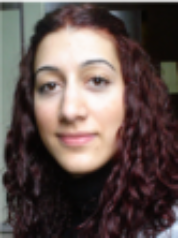Characterization of strained silicon FinFETs and the integration of a piezoelectric layer
Promotion date: November 20.
Promotor: Prof.dr.ir. Rob Wolters
Assistant Promotor: Dr.ir. Ray Hueting
| Strain is often applied in semiconductor technology to improve the device performance in a field effect transistor (FET). However, it increases the off-state current as well. In this work, we investigated silicon-on-insulator (SOI) fin-shaped field-effect transistors (FinFETs) and the effects of strain formed by the difference in coefficient of thermal expansion (CTE) of the used materials. Moreover, near ideal SOI FinFETs were realized in the clean room of MESA+ Institute for Nanotechnology They served as a base for our new strained device structure: the PiezoFET. The PiezoFET is a novel device in which the channel strain can be controlled by a piezoelectric stressor, to keep the off-current the same while increasing the on-current. In this device structure, PZT was used as a stressor and the effects of strain modulation due to the converse piezoelectric (piezo) effect in these devices were studied. The fabricated PiezoFET device is a good candidate for several future applications. Due to the possibility to obtain a lower and controllable sub-threshold swing compared to the base transistors, it can be an alternative FET design. In addition, the higher effective mobility makes it a reference point for improving the FinFET characteristics. |
Was your approach novel and application driven?
This device structure was never fabricated and studied before. And yes, it was application driven. The idea was to strain the silicon channel by using piezoelectric layers on top of it. The great advantage is that the device can be tuned in a controlled way. This means that we can turn on and off the strain whenever needed. This was our great challenge in this project.
The members of the supervisor committee responded very well on my findings, right from the start of the project. One member of the committee, from NXP Semiconductors, played an important role by sharing his knowledge of piezo-layer technology and device applications. Also we collaborated with the Inorganic Materials Science group at the Mesa+ Institute. They provided us the piezoelectric materials.
Did you manage to have some nice articles published?
As the research was application driven, the publications mostly took place in the second half of the project after all data were collected and publishable. One article was published in Thin Solid Films and two are submitted right now, to Transactions on Electron Devices and Microelectronic Engineering.
What are your future plans?
At the moment I am working as an Application Engineer at ASML. I like the customer-driven work I am practicing here; solving the issues and matching the process technology with the ASML machines to improve the outcome. This work is equally demanding as is a PhD project, I believe.
The everyday dynamics here at ASML I like very much so. One has to be awake and aware of the updates your daily colleagues come up with. At the University of Twente the work was more self-driven.
In what way did you change personally, as a researcher and scientist?
I gained some important skills along the way. For example, I learned not to spend too much effort on a particular thing if something is not right. Sometimes stepping back and looking again helps to solve the problems easily. Having a broader view to go on with the alternatives saves time.
Also I can read and write a paper much more efficiently now. This is because I learned how to get and give the important points.
Now I feel that I am more patient. Most of the time it takes longer than expected to get good results. For example machine downtime can cross your activities badly. In the beginning of the project you have to keep your hopes alive. I learned that aiming for the best is okay, but being realistic is much more important, to come up with some nice results in this four years of time. This period is quite limited.
Did you feel part of the Mesa+ community?
Yes, very much so. I enjoyed the cleanroom work which was an important part of my work. I enjoyed the everyday life at Mesa+, sharing knowledge. This, in my view, is very important. It is equally important to share the issues and concerns one is working on with other people who have gained some experience in solving them. This brought my research further on some crucial moments.
The collaboration between groups could be stronger within Mesa+, I believe. The collaboration with the Nanoelectronics group, for example, proved to be favorable for some projects. Now new projects have arisen from that, which is a nice result from my thesis work as well.

